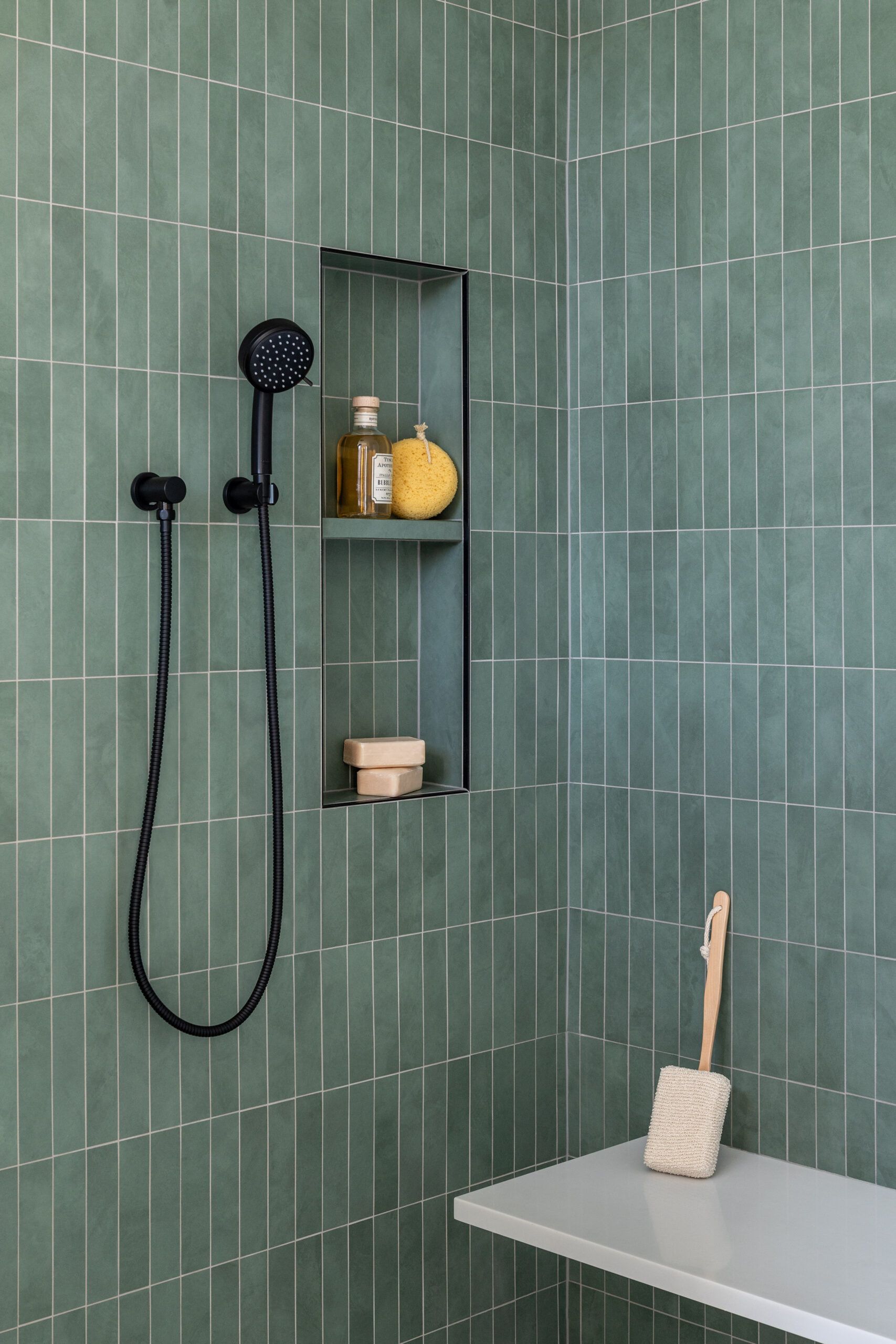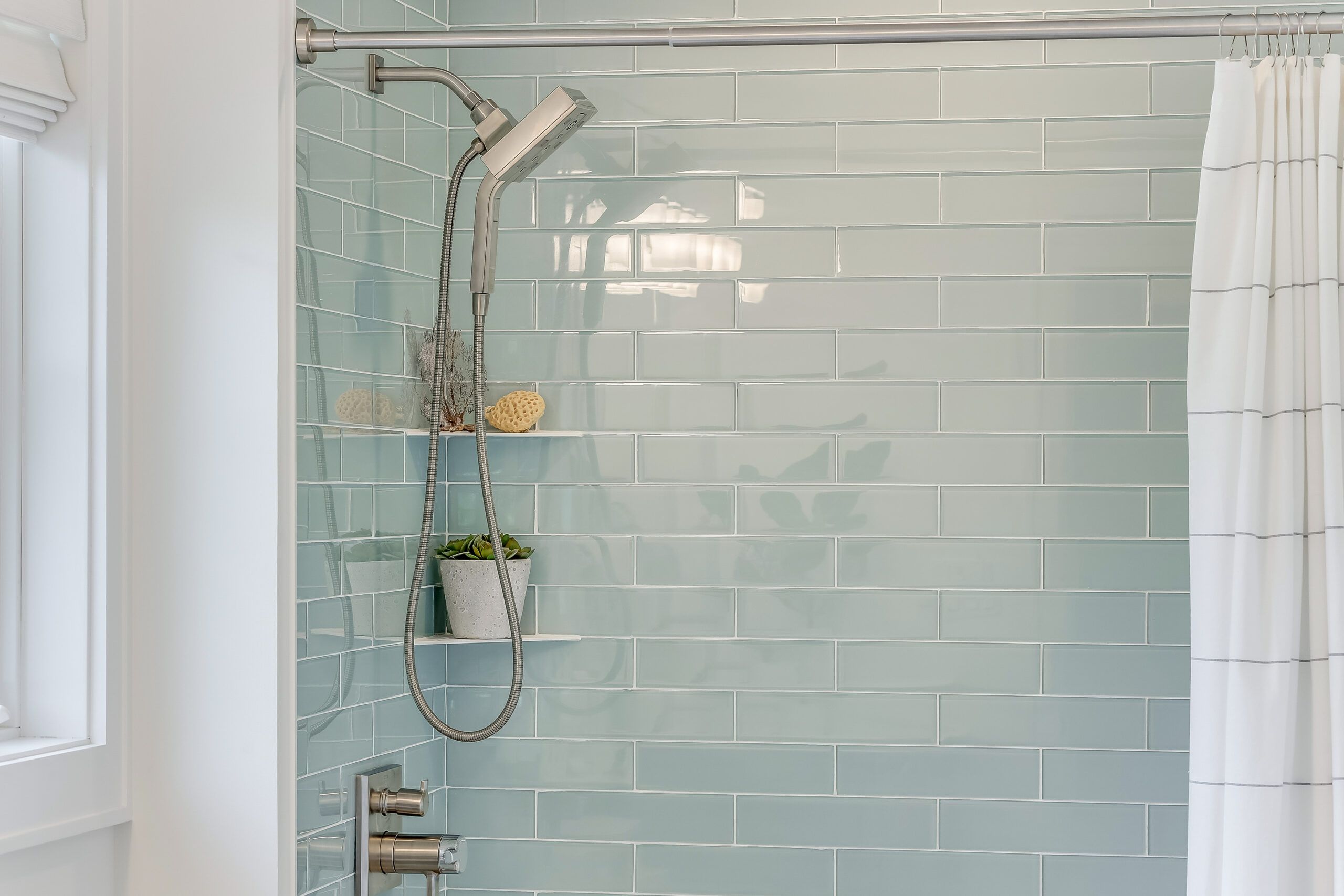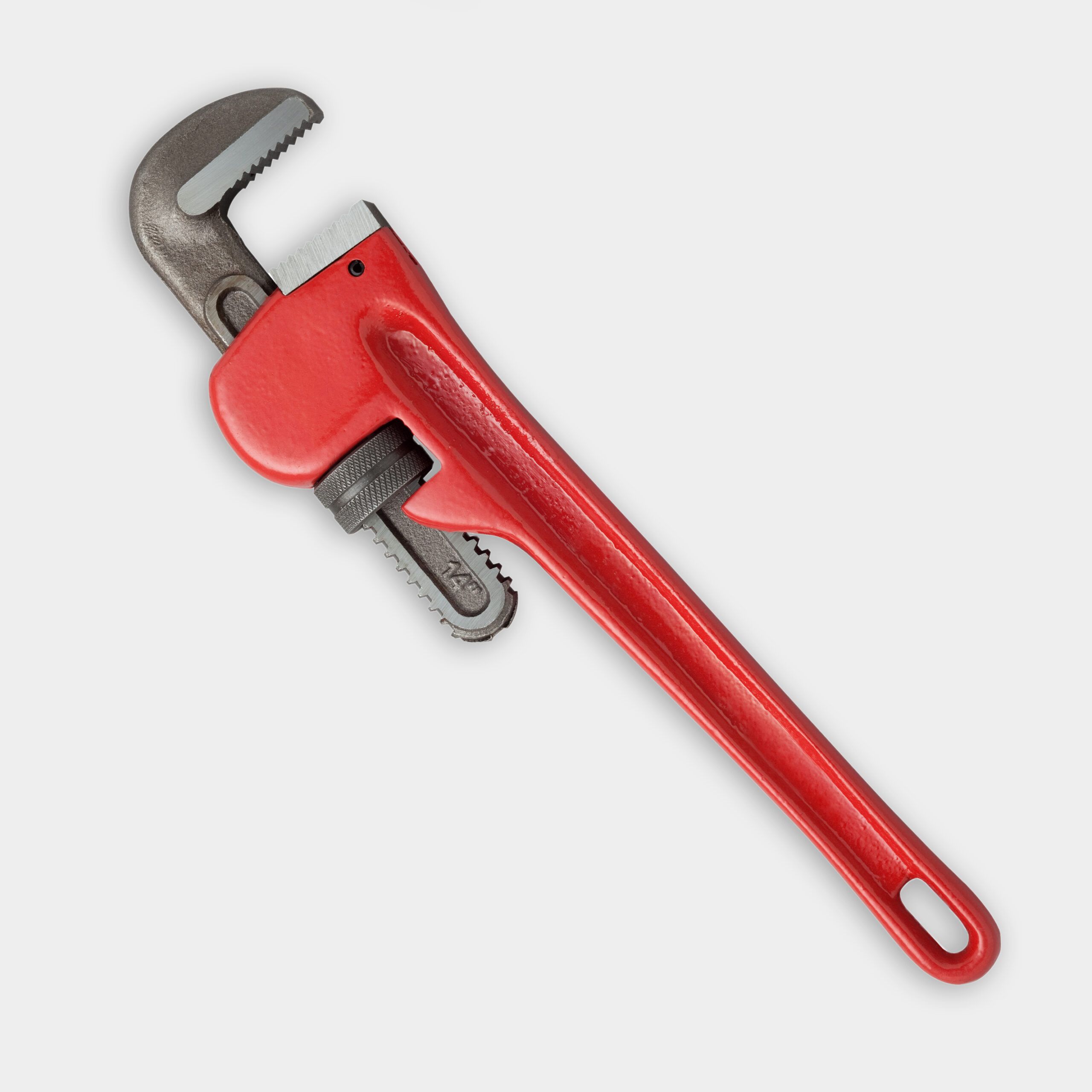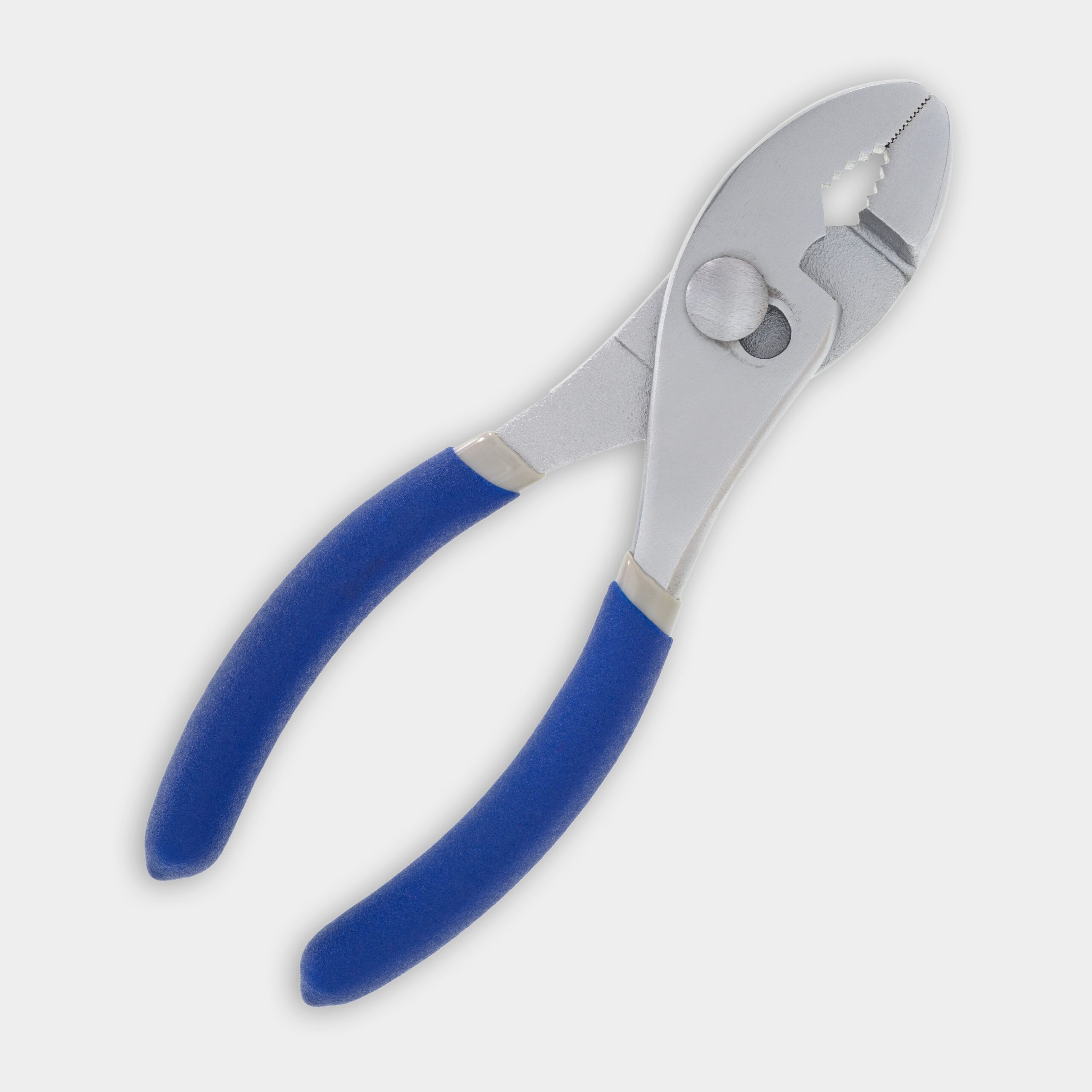Project details
Skill
Cost
Estimated Time
If your shower leaves a lot to be desired when it comes to functionality and bathing enjoyment, there’s a simple solution: Replace your basic fixed shower head with a flexible handheld version.
Now why would you want a handheld shower head? The simplest reason is so you can rinse places where your fixed head can’t reach, which is particularly helpful if you or a family member has mobility issues and needs to shower while seated. It also makes washing the kids or a dog in the bathtub much easier, as well even rinsing the shower stall after cleaning it.
These come in many finishes with a wide range of features and price points, but they all share the same essential components—a graspable shower head, a mount to hang it on, and a hose to connect it to your plumbing. And the best part is that most handheld showerheads can be installed in minutes with little or no tools, even if you have no prior plumbing experience.
What to Consider Before Buying a Handheld Shower Head
Hose length

The lengths of the shower head’s hose can vary greatly from one model to another. So first and foremost, find one with a hose that’s long enough for your needs but you also need to double-check that it’s not so long that it gets in the way when the head is placed i n its mounting bracket.
The lengths of the shower head’s hose can vary greatly from one model to another. So first and foremost, find one with a hose that’s long enough for your needs but you also need to double-check that it’s not so long that it gets in the way when the head is placed in its mounting bracket.
Size
The diameter of the plumbing pipes that a shower head attaches to don’t differ too much. On the other hand, the distance between the base of the shower head to the ceiling can vary greatly as where to mount it was originally determined by the person who built the shower in the first place. Because handheld shower heads come in various lengths, and some hang by their heads while others are supported by their handles, there’s a chance that the one you want to buy could be obstructed by the shower ceiling. So before you get your heart set on a particular model, measure the available space you have to work with and check to see if the shower heads that you’ve been considering will fit.
Angle
The angle of the shower arm—the pipe coming out of the wall that your shower head attaches to— is important too. Some shower arms stick straight out of the wall, while others bend downward to better aim the shower head. If your shower has a bent arm and its angle is steep, certain types of handheld shower head mounting brackets—especially the magnetic kind—might not have enough grip to keep the head from falling off. If this is the case, it’s safest to choose a shower head with a tapered sleeve-type mount that requires you to lift the handle up and out of it. Or you could go to the plumbing supply store or home center and test out which ones feel like they grip firmly enough to stay put.
Features
Upgrading your old shower head means you’ll have a lot more options to level up the bathtime luxury. Most handheld shower kits include multiple flow settings, such as pulsing massage, gentle mist, and deep cleaning jets, with some heads having as many as 10 unique flow options. The fanciest models have both a fixed head and a handheld head so you can enjoy two separate streams of water at the same time. Other possible upgrades include aromatherapy capsules, LED lighting, or even Bluetooth water-consumption monitors for eco-minded bathers.
How to Replace a Shower Head
Step 1: Remove your old shower head
Turn the knurled knobs that attach the shower head to the pipe that’s sticking out of the wall. You may need a couple of wrenches or pairs of pliers for this step if it doesn’t release by hand. If you are using pliers, wrap the pipe with a rag, electrical tape, or some other thin, grippy material beforehand to avoid scratching it with the jaws of the tool.
To remove the old shower head, grip the pipe that’s sticking out of the wall with your hand (or with the pipe wrench or pliers, if needed) and hold it firmly so it doesn’t move. With your other hand, rotate the nut at the end of the shower head counterclockwise until it comes off the pipe. Be prepared to catch the shower head so it doesn’t hit the floor. Sometimes you will find that the plumber who installed the original shower head used white teflon tape on the shower arm pipe threads to make a tight seal ; if there’s any tape left on your pipe after removing the old shower head, peel it off and wipe the threads clean with a damp rag.
Step 2: Install the new shower head
Read the manufacturer’s instructions, paying attention to the installation diagram, to make sure you’ve got all the parts you need, and that you know the order that the parts go together before beginning the install process.
Typically, you would start with the combined plumbing connector and shower head hanging bracket. If your shower head kit also includes a fixed head, it’s probably already attached to this hanging bracket. There will be a nut on the back of this assembly that mates up to the pipe coming out of the wall. Check your installation diagram to see if the nut should have a filter screen or a rubber washer inside, and if so, make sure these are in place first. If the nut does not include a rubber washer, wrap Teflon plumbing tape clockwise around the wall pipe threads 2 or 3 times to provide a watertight seal.
When you’re ready, firmly hold the wall pipe with one hand to keep it from turning while you thread the new head’s connector onto the pipe with the other, rotating the nut clockwise until it feels tight. You may need to align the hanging bracket vertically and hold it there before you make the last few turns to tighten the nut.
Keep in mind: Most modern shower heads don’t require tools to install them, but you can carefully use a rag to protect all the surfaces of your shower and shower head, and use pliers or pipe wrenches to tighten the connection if the nut and pipe are difficult to grip and turn by hand.
Next, check if the hose connections came with rubber washers, if they have built-in seals, or if they require you to apply Teflon tape to the male threads. Once that’s determined, thread one end of the hose onto the outlet of the shower head connector that you previously installed and thread the other end of the hose onto the handheld shower head. Firmly tighten both of those connections. Generally, this is all that the installation entails, but double-check your specific product’s installation diagram for additional steps.
Step 3: Test the handheld shower head
Confirm that everything is working properly and that there are no leaks. First, hang the head on the bracket and make sure it stays put. Most shower heads have a movable ball socket that allows you to aim the head where you want it. You may need to loosen a rotating ring at the socket to allow it to pivot; if so, turn the ring counterclockwise, aim the head where you want it, and then turn the ring clockwise to lock the head in place.
Next, turn the shower on and see how it flows. If your head has multiple settings, there will be a switch or dial to select the various settings. Run through all of them to ensure they are working properly.
Finally, inspect all the hose and pipe connections for leaks. If you see any water dripping at one of these fittings, carefully tighten it until the dripping stops. Now your new handheld shower head is ready to enjoy.
Materials
- Handheld showerhead kit
- Rags for cleaning and protecting fixture surfaces
- Teflon plumbing tape (optional, if your showerhead doesn’t include rubber washers)
Tools
Tools & Materials
Two pipe wrenches or pairs of pliers (optional, if the showerhead fittings are difficult to turn by hand)



